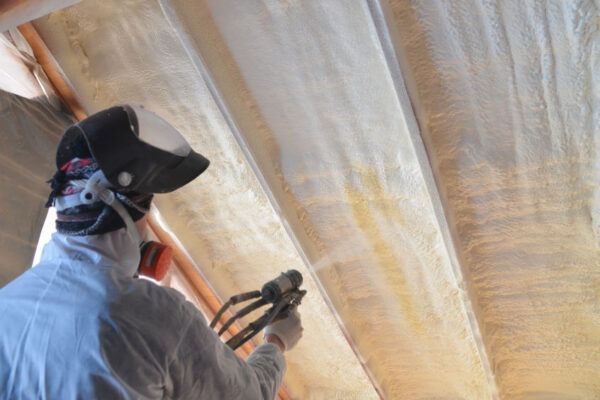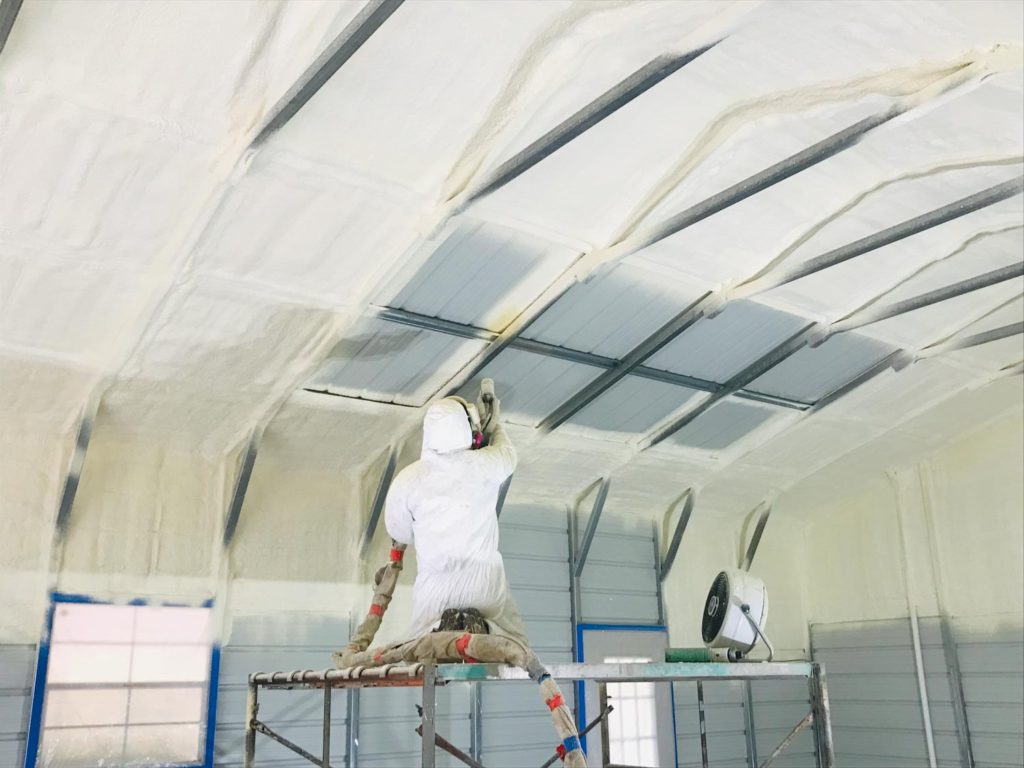Common Misconceptions About Spray Foam: Debunking the Misconceptions
Common Misconceptions About Spray Foam: Debunking the Misconceptions
Blog Article
Spray Foam: The Ultimate Solution for Air Sealing and Insulation
Spray foam insulation has arised as a leading option for reliable air securing and thermal insulation, supplying a special mix of residential or commercial properties that set it aside from standard techniques. Its capability to broaden and fill up spaces makes it especially efficient in stopping air leak, which can substantially affect energy effectiveness. Comprehending the full scope of its advantages, installment processes, and comparisons with various other insulation kinds is critical for making notified decisions. As we explore these facets, the ramifications for both new constructions and retrofits come to be progressively significant. What variables should affect your choice?
What Is Spray Foam?
Spray foam is a versatile insulation material that incorporates the principles of air securing and thermal resistance to enhance energy performance in buildings. Made up primarily of polyurethane or other comparable compounds, spray foam is applied as a fluid that increases upon contact with surface areas, developing a solid, constant layer of insulation. This one-of-a-kind building allows it to fill up voids, cracks, and spaces that standard insulation products may neglect, supplying a superior air seal.
There are two primary kinds of spray foam: open-cell and closed-cell. Open-cell spray foam is lighter and more flexible, providing exceptional audio absorption and a lower R-value per inch - Spray Foam. In contrast, closed-cell spray foam is denser, offering a higher R-value, wetness resistance, and included architectural honesty to constructing components
The application process usually involves specific equipment, guaranteeing a smooth application that abides by different substratums, consisting of timber, steel, and concrete. This adaptability makes spray foam suitable for both new constructions and retrofitting existing structures. Its ability to create an airtight obstacle dramatically adds to lowering power intake and enhancing indoor air quality, thereby making it a preferred selection amongst home builders and house owners alike.
Benefits of Spray Foam Insulation
Among one of the most considerable advantages of spray foam insulation is its remarkable ability to develop a constant air barrier, which properly reduces energy loss. Unlike typical insulation materials, spray foam expands to load spaces and splits, making certain that air leakage is considerably reduced. This particular not only improves energy effectiveness but likewise leads to decrease utility expenses over time.
In addition, spray foam insulation provides remarkable thermal resistance, contributing to a more steady interior environment. Its high R-value per inch permits effective insulation in restricted rooms, making it optimal for attic rooms, walls, and crawl areas. In addition, the moisture-resistant buildings of spray foam help stop mold and mildew and mildew growth, advertising much healthier living conditions.
One more critical benefit of spray foam insulation is its sound-dampening top qualities (Spray Foam). It properly reduces noise transmission between rooms, producing a quieter and a lot more comfy home setting. The durability of spray foam also stands apart, as it does not sag or clear up gradually, keeping its efficiency throughout its life-span
Just How Spray Foam Works
Understanding how spray foam insulation functions is essential for appreciating its effectiveness in air securing and thermal resistance. Spray foam insulation is composed of 2 main elements: isocyanate and polyol resin. When these components are mixed, they undergo a chain reaction that causes the product to increase quickly, producing a dense foam that loads spaces, cavities, and cracks.
As the foam broadens, it adheres to surface areas, developing an airtight seal that significantly lowers air infiltration. This particular makes spray foam insulation extremely effective at protecting against drafts and wetness penetration, which can bring about energy loss and damages gradually. Additionally, the closed-cell version of spray foam provides superior thermal resistance because of its rigid framework, effectively lessening heat transfer.
The one-of-a-kind buildings of spray foam allow it to satisfy irregular surface areas, ensuring detailed coverage and a seamless obstacle. Because of this, spray foam insulation not only improves power efficiency however additionally contributes to boosted interior air quality by minimizing the accumulation of pollutants and allergens. Eventually, recognizing the auto mechanics behind spray foam highlights its duty as an exceptional option for insulation and air securing in both industrial and property applications.
Installment Refine Introduction

Before installation, the area needs to be adequately cleaned and prepped, guaranteeing that surface areas are without moisture, debris, and dust. Because contaminants can compromise attachment and total efficiency, this action is vital. When the area is prepared, the application includes mixing the two components of the spray foam, which increases upon call and fills up spaces efficiently.
Trained professionals need site to perform the setup, using specialized equipment to make certain consistent protection and optimal thickness. Security safety measures, including putting on protective gear and making certain appropriate ventilation, are vital during this procedure. After application, the foam normally cures promptly, developing a solid obstacle that improves power effectiveness.
Comparing Spray Foam to Typical Insulation
When examining insulation alternatives, spray foam insulation stands out in comparison to standard products such as fiberglass and cellulose. Unlike fiberglass and cellulose, which can allow air infiltration, spray foam increases upon application, filling holes and gaps to produce a closed seal.
In addition, spray foam provides a higher R-value per inch than conventional insulation kinds, supplying even more effective thermal resistance in a thinner profile. This characteristic is especially beneficial precede with restricted tooth cavity deepness. In addition, spray foam is immune to moisture and mold growth, which can be a significant worry about cellulose and fiberglass, especially in damp atmospheres.
However, spray foam insulation usually brings a higher upfront cost than its traditional counterparts. Homeowners have to consider this first financial investment against long-term energy financial savings and efficiency benefits. Ultimately, while both insulation types offer their function, spray foam emerges as a more innovative option for contemporary have a peek at this website insulation needs, specifically in regards to air sealing and thermal efficiency.

Verdict
In summary, spray foam insulation represents an extremely reliable solution for accomplishing ideal air securing navigate to these guys and thermal resistance. Its unique homes, consisting of dampness resistance and sound dampening, make it suitable for various applications in both new constructions and retrofitting projects (Spray Foam). The initial costs may be greater contrasted to typical insulation materials, the lasting advantages, such as substantial power cost savings and enhanced indoor air quality, justify the financial investment and emphasize its worth in contemporary building practices.
Spray foam insulation has actually arised as a leading service for effective air sealing and thermal insulation, supplying an one-of-a-kind mix of residential properties that set it apart from conventional methods.Spray foam is a functional insulation product that combines the concepts of air securing and thermal resistance to enhance power effectiveness in buildings.When reviewing insulation choices, spray foam insulation stands out in comparison to typical products such as fiberglass and cellulose. Ultimately, while both insulation kinds serve their objective, spray foam emerges as a more innovative service for modern-day insulation requirements, particularly in terms of air securing and thermal efficiency.
In recap, spray foam insulation represents an extremely effective option for achieving optimum air sealing and thermal resistance.
Report this page